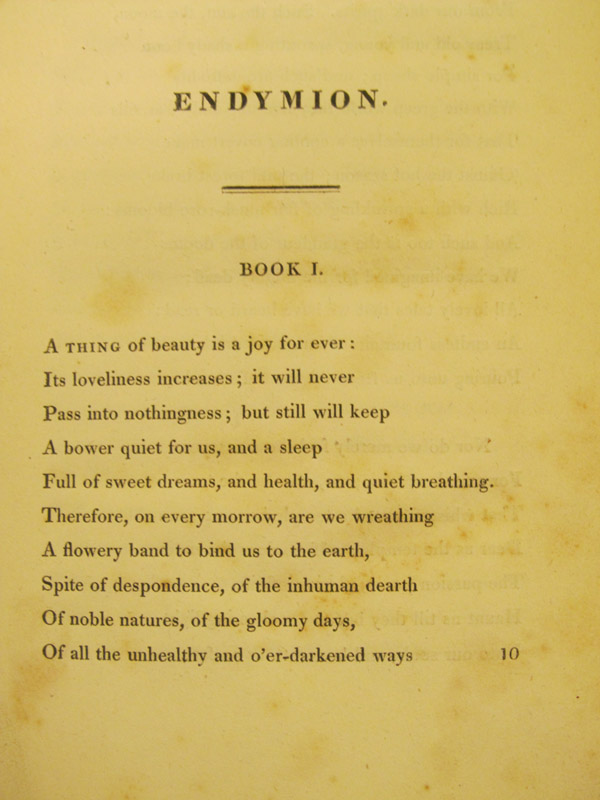You may remember Hopkins undergrad Jessica Terekhov’s earlier piece on Charles Dickens. Here, Jessica discusses her encounter with first editions of Keats works housed in Special Collections!

Among the Romantic poets of the seventeenth and eighteenth centuries, John Keats is an incontestable icon. His poems, which range in form from the sonnet to the epic, are extraordinary interpretations of nature and mythology. His ability to relate classical themes to human sentiment through writing is arguably unmatched. Upon his untimely death from tuberculosis in 1821, at age twenty-five, Keats had written such unforgettable works as “Ode to a Nightingale,” “Ode on a Grecian Urn,” “Isabella,” and “La Belle Dame sans Merci.”
The Department of Special Collections houses the original publications of Endymion and Lamia, with other poems – from 1818 and 1820, respectively. Knowing and loving Keats’ poetry, I was beyond thrilled to see the volumes. I opened two leather cases and slipped out two brown, paperboard hardcovers. The titles were tiny on their spines, the edges of the pages inside, uneven, and the font was uniform and plain.
Where was the handsome leather binding? Where were the gilt pages, illuminated letters, and fragile designs? I examined the covers for proof they had only faded with age, trying to reconcile the modest volumes with the tremendous legacy of John Keats. My expectations for a grand publication were unmet, much to my surprise.
I had opened, before, to the beginning of Endymion. As I now turned the yellow-blotched pages of “Ode to a Nightingale,” tracing the imprint of letters through the paper, I couldn’t get the first line of Keats’ “poetic romance” out of my mind. A thing of beauty is a joy for ever. Were there a thing of beauty in literature, I now held it in my hands.
